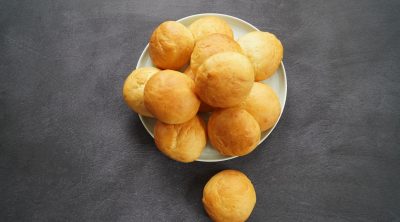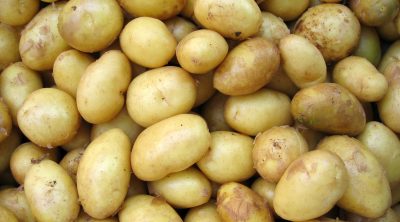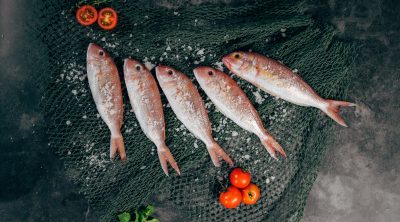It’s easy to group noodles and pasta together. After all, we frequently use the terms interchangeably. They look, more or less, the same. They frequently taste similar as well.
It doesn’t hurt that they’re both delicious staples in diets around the world.
Noodles and pasta are both primarily made with flour and water. They can both be cooked in boiling water. You can find them served in a wide variety of dishes.
They have a lot of similarities—but are they the same thing?
While they are both filled with carbohydrates and can be served in similar ways, noodles and pasta aren’t exactly the same. In fact, noodles and pasta belong to two entirely different categories of food.
“In fact, noodles and pasta belong to two entirely different categories of food.”
If you’re wondering what they share in common—and where they differ—this is the article for you.
Noodles
Have you ever sat down to a hearty chicken soup filled with delicious noodles? That’s right—those are noodles. Maybe you picked up ‘lo mein’ at your favorite restaurant, or stopped in for some ‘udon’? Those are noodles, too.
So what makes a noodle a noodle?
The National Pasta Association defines noodles as containing at least 5.5 percent egg solids in their makeup. Noodles are dense and can be added to soups and casseroles without becoming a soggy mess.
Noodles—named after the German word “nudel” and the Latin word “nodus”—are made with unleavened dough and are prepared in boiling water. Noodles contain a high amount of carbohydrates, which makes them a perfect source for a boost of energy.
Noodles can come in any shape but are most frequently seen in long, thin, strips or rods. It’s difficult to pinpoint where the noodle came from precisely, but it’s believed to have originated in China during the Eastern Han Dynasty.
In 2005, archaeologists there unearthed a bowl of noodles dating back 4,000 years. Whether that’s the first time they made their appearance or not, we do know noodles traveled westward.
Eventually, they would become a staple food, available worldwide.
Noodles can be made from a variety of food sources, including mung beans, potato, buckwheat, wheat, acorn, and rice. The flour used in noodle making is traditionally a finer flour than that used to make pasta varieties.
The milled flour used to make noodles leaves you with a light-colored, smooth textured product. When cooked, they tend to be very soft—no real biting or chewing should be necessary when eating noodle dishes.
Like pasta, noodles begin as a dough. After mixing together the ingredients and kneading the dough, it’s rolled quite thin. This process can be done a variety of ways by hand, including traditional methods, or by using a rolling pin.
Once the dough has been rolled thin, the noodles are sliced into their final shape. When the noodles have been sliced, you’re free to cook them immediately or store them for later use.
A main ingredient in many different types of dishes from all over the world, noodles can be served in hot or cold dishes. Noodles can also be fried, served in soups, or boiled as a main dish to be served with meat or vegetables.
Noodles can vary greatly in taste, depending on how much salt has been used and what their original source was. The added salt helps soften the gluten proteins and allows for that classic malleable noodle. Noodles are versatile and complement an array of flavors.
Still a staple in Asian countries—and many others—noodles are delicious, filling, and inexpensive.
Pasta
Most of us think of pasta as originating from Italy, but that’s actually not the case. Pasta first came from Arabia.
The word pasta, though, does come from an Italian word that means paste. This name comes from the process of making the pasta dough—the step that happens before the pasta turns into the shapes we know and love as farfalle, ziti, rigatoni and more.
Like noodles, pasta is made with unleavened dough. Fresh pasta can be made with eggs and kept in the refrigerator for a few days. Most of us, however, are more familiar with dried pasta. Dried pasta, without eggs, can be kept on a shelf for up to two years.
Pasta is made with wheat—durum wheat exclusively if you’re in Italy—and can contain vegetable extracts. Some pasta dishes involve stuffing the pasta, like gnocchi and ravioli.
Unlike noodles, pasta shapes have distinct names and are used for specific types of meals.
When cooking pasta, the goal is to have a firm, or al dente, finished product. The pasta should not be mushy. Instead, you’re looking for something that holds its shape and gives the feeling of a crisp bite being taken.
Crunchy, undercooked, pasta is not what you’re looking for. This can make the simple act of cooking pasta more difficult than you might have imagined.
While pasta, like noodles, can be made with salt added, the salt is typically used during a different step in the cooking process. Using salt during different stages of cooking impacts how it will work in the recipe.
Salt is used with noodles during the making of the dough to change the structure of the finished product.
When adding salt to flavor the water and pasta—usually during boiling, but also in sauces and the finished product—it is strictly to enhance the flavor.
Pasta is an easily accessible food. In North America and Europe, we associate pasta dishes with Italy, but versions of pasta can be found throughout the world.
Orzo in Greece. Spaetzle in Germany. Pierogies in Poland.
With over 200 types of pastas—available in over 300 different shapes—pasta dishes can be served cold or warm in a variety of different sauces and presentations. Pasta has become a cornerstone in ethnic cuisines everywhere.
Either Way, It’s Delicious
Noodles and pasta may, at first, seem interchangeable. It’s clear, though, that they stem from very different origins and have separate purposes in our culinary world.
Dishes meant to be made with pasta, but served with noodles instead would be pretty disappointing. The inverse is true as well.
Both noodles and pasta have become the victim of anti-carbohydrate dieting fads in recent years. While they’ve received a bad reputation for being heavy on calories with little nutritional value, that’s not always the case.
Carbs are great for producing energy and are a staple in athletes’ diets. Furthermore, I prefer to think that a balanced diet with smart portion sizes is key.
It’s clear that pasta and noodles are two entirely different foods. That doesn’t stop them from both being delicious. Fortunately, there’s no reason to stick only to one or the other—you just need to know when to use what.






